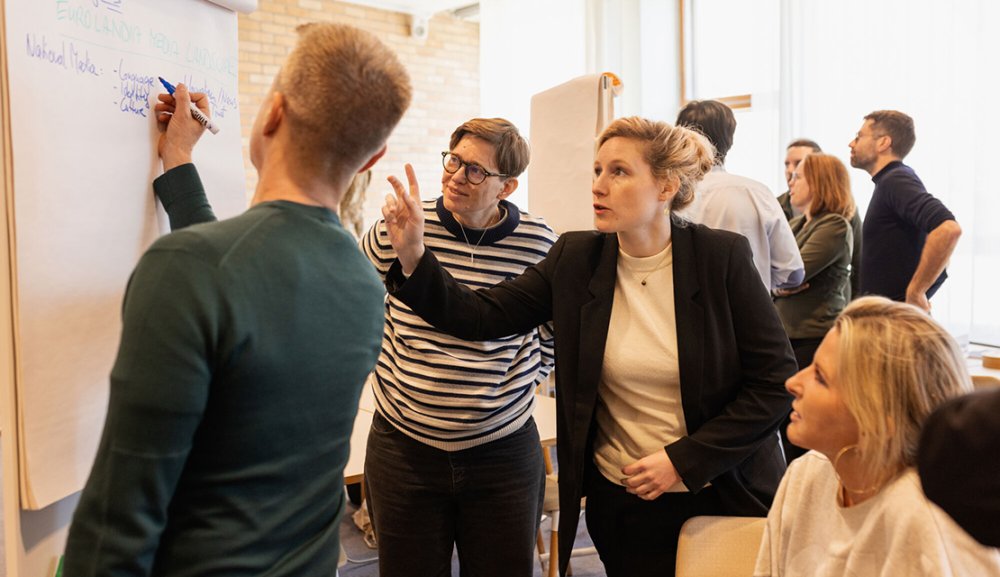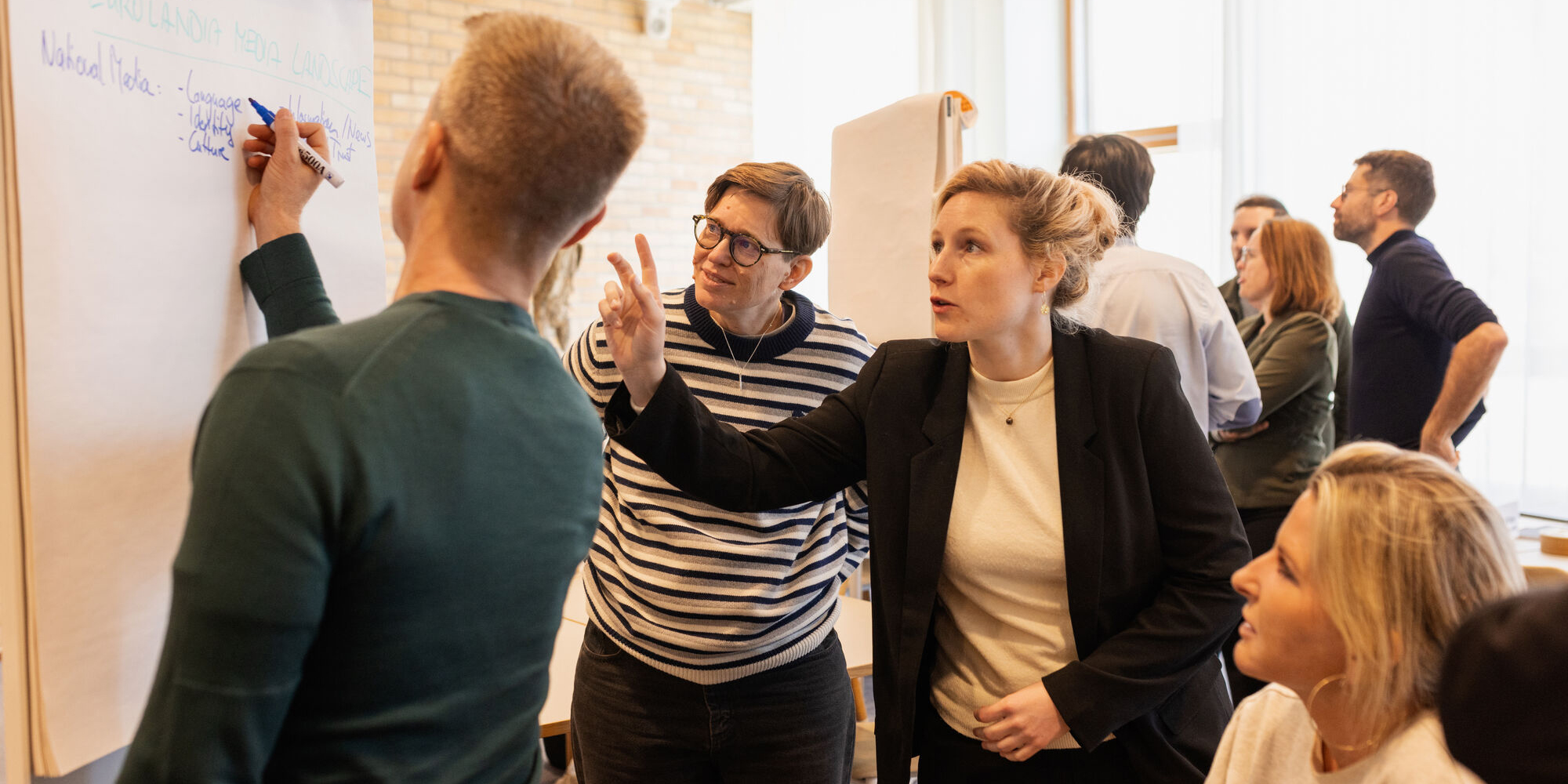More Functional Public Service with Service Design—Helsinki Central Library Oodi as a Shining Example
More functional services can be achieved by using service design in public administration, whilst simultaneously bringing about financial savings. User-centric design has become a key element of the strategy of the City of Helsinki, with one shining example of the City’s well-functioning service design being Central Library Oodi, which has received international acclaim.
Tiia Lappalainen, 25.11.2019
|Articles
A range of different experiments and a culture of experimenting have also turned heads at state administration level. According to Professor Ramia Mazé of Aalto University, Finland is a pioneer when it comes to using service design in public services.
Central Library Oodi’s full upstairs terrace is aglow in the sun. The view opening out directly onto Finland’s Parliament House, basking in the sunlight at the same level as it, makes the success of service design expertise, participation, and resident democracy tangible in many ways.
When the City of Helsinki began planning the new central library around ten years ago, users were involved in the design process from the very start. Involvement and participation continued throughout the duration of the process, and that the library’s visitor numbers have stunned everyone is a good indicator of the success of the project as a whole.
The library welcomed its millionth visitor in March, just four months after opening, with its two millionth visitor arriving in just its eighth month.
In August, Oodi received the Public Library of the Year award for the best new public library in the world in 2019, with the library receiving glowing reviews throughout international media.
“Oodi has been a comprehensive process, with the entire content and concept of the building shaped through design. We started to give shape to the library of the future based on what residents wanted, and the building users and customers played a major role in the design process,” explains City Design Manager Päivi Hietanen of the City of Helsinki.
“Whatever day of the week or time you go to Oodi, it’s full of people. That tells us that we’ve really taken a new approach in what we’ve done. Resident participation improved the quality of the designs and created a sense of ownership, and that’s clear to see in how popular Oodi now is.”
Professor of CoDesign at Aalto University Sampsa Hyysalo also feels that Oodi is an excellent example of a successful co-development process and participation. Hyysalo himself was involved in the Oodi design process.
“The planning was conducted with 12 different inclusive methods, and the outcome was a success,” states Hyysalo.
He believes that participation and co-development could be put to much greater use in the planning of services than they currently are.
At the City of Helsinki, service design and user-centric design have been taken seriously and implemented all the way up to strategy level. The City’s objective is to be the most functional city in the world, and service design has a vital role to play in achieving this.
Oodi is an excellent example of a successful co-development process and participation."
Päivi Hietanen believes that with the help of design, resident democracy can be increased and the City will be able to offer better, more user-friendly and more functional services.
At the same time, it can also bring about savings; for example, the digitalization of services reduces the need for all kinds of unnecessary paperwork and makes the City’s own operations more efficient.
Among other measures, Helsinki has hired borough liaisons, who actively work at the interface of City and residents. In the competition for and selection of city bikes, Helsinki recruited residents to test the bikes and the feedback they provided served to support the quality specifications used in the competition. Furthermore, residents are invited to come up with ideas for how to spend a 4.4 million euro City budget.
“We currently have dozens of service design processes of different scales underway. It’s obvious to me that this is the right operating model. I believe that the best version of the city and new innovations are created through cooperation with residents and adopting new methods in an agile way,” says Hietanen.
In addition to this, alongside Aalto University, the City is a pioneer in developing a reference framework whereby the impact of design operations can be better measured and used in public administration.
“Based on our own benchmarking, assessment of the impact of design is still relatively rare in public administration, making us a kind of pioneer in this respect,” explains Hietanen.
Experiments as a part of state administration
Efforts have been made to start using methods based on service design and behavioral sciences in the state administration of various different countries. One example of this is nudging, with which major savings in public administration in countries such as the UK has been reported in designing services.
Nudging and other service design and experimenting culture methods have also been used in Finland, in the Experimental Finland project launched under the Sipilä administration, with good experiences reported.
The most important measure of success is what has been learnt from the experiment."
“The Experimental Finland brand was created to support cultural change. Experiences have been good, especially out in the field. We were given permission to do things differently, and pressure from above on management level was created,” explains Experimental Finland Project Manager Ira Alanko.
One example Alanko mentions is Kela, the social insurance institution of Finland, which made experimenting culture its own and used it to reform its operating practices. According to Alanko, job satisfaction within the organization has multiplied thanks to the experiments.
During the course of the project, the Kokeilun Paikka (Place to experiment) platform was also created, the intention of which was to bring together those with ideas, those capable of implementing them, sparring partners, and financers, and to facilitate a range of experiments. Alanko is not even aware of all the public administration experiments, as they are not all on Kokeilun Paikka. It was vital that the Experimental Finland project would bring about opportunities to do things differently.
“We funded small-scale experiments through Kokeilun Paikka, which gave us new expertise and understanding. Government officials were emboldened to try doing things differently. We thought about different operating approaches and looked at our own practices in a different light. So far, it’s still difficult to assess all of the impacts, but overall, things are looking positive,” states Alanko.
According to Alanko, when carrying out measurement work, the key is focusing on what’s really and ensuring you don’t go overboard with measuring, so that the assessment work doesn’t require excessive amounts of time or effort.
“What you’re measuring should reflect performance, it must have continuity and a link to the strategy, and you must consider the purposes for which you are taking the measurements. The expertise of the people carrying out the measurement work and their understanding of the context are emphasized here.”
However, according to Alanko, the most important measure of success is what has been learnt from the experiment and whether the information gleaned from it has been used.
One of the most interesting experiments has been the basic income experiment, which is still underway. In Alanko’s view, as an experiment, it has been quite successful.
“It has taught us a lot about the utilization of research-based experimental design as a catalyst for systematic change,’ says Alanko.
Public discussion in particular, however, has happily gone somewhat crazy over whether the experiment has succeeded as a process or thanks to the solutions.
Alanko is keen to point out that no one experiment can resolve such a huge issue entirely, instead, the testing of social security reforms will continue with an experiment concerning taxation.
“The basic income experiment was a very bold bet. When we started out, experiment culture and expertise were still very much in their infancy in Finland. As a process, the experiment was realized in a high-quality manner, and the lessons learnt from it utilized in the next round of experiments. The level of expertise and understanding nowadays is good,” says Alanko.
A challenge with projects such as the basic income experiment is that the results won’t necessarily be available for use during the same term of office, and the credit won’t necessarily go to the administration that launched the experiment.
“The administration expected that the experiment would be underway within a month of the decision having been made, which, of course, was not possible. At a political level, this was also a place for learning,” states Alanko.
Design course brings students from all corners of the globe to Aalto
In public administration, one particular challenge with design is that when planning services for citizens and residents, very broad and varied groups of people must be taken into account.
Citizens’ perspectives and creative thinking are particularly vital at ministry level."
“Design on the public side of things entails the experiences, areas of interest and rights of the widest possible group of people. Their demographics as well as cultural and socioeconomic backgrounds vary substantially. They might not even necessarily be involved in the political system,” explains Aalto University Design Department’s Professor Ramia Mazé, who also heads up the Design for Government course.
An example of this is young people who cannot yet vote, but who are amongst the largest stakeholders groups when it comes to the future.
The task is not, therefore, easy, but according to Mazé, we are already in a good position in Finland—perhaps even pioneers—in understanding the significance of design as a part of public administration.
She mentions the example of the City of Helsinki’s Helsinki Lab and the Finnish Immigration Service’s Inland Design, which serve as pioneers in how a design organization can be merged into Finnish administration.
Finland’s role as pioneer in design expertise can also be seen in Aalto University’s Design for Government course, which is popular both in Finland and internationally. The course boasts graduates from 43 different countries, and according to Mazé, many of them came to Aalto University specifically because of this course.
As its name suggests, the course trains design thinking and design experts in the needs of public administration. The students are given the opportunity to get stuck right into real-life challenges: Every year they carry out projects determined by governmental ministries in cooperation with the course.
For example, last spring the students worked with the Ministry of Finance to think about how artificial intelligence could be put to use to develop better and more human-centric services.
Mazé’s goal is to use education to bridge the gap between the decision makers and service designers and the users they are designing for. This applies in particular to state administration, which has traditionally been more removed from citizens than municipalities, for example, have been, being physically closer to the people.
“However, citizens’ perspectives and creative thinking are particularly vital at ministry level when designing and realizing elements and processes relating to decision-making,” says Mazé.
Four service design lessons in the public sector
According to City of Helsinki City Design Manager Päivi Hietanen, Helsinki has learned four key lessons from its service design process:
1. Design is a powerful way of implementing customer-centric thinking in public administration.
2. Sufficient time should be set aside for completing design projects and for understanding the actual issue at hand.
3. Changes to the operating environment and political decision-making can lead to changes to services. It’s important to give thought to these future perspectives.
4. Design activities require changes in culture and change management, as design can lead to major adjustments in operations too. Ensuring that management is committed and commitment to the work are vital to the success of service design.
Aalto PRO's Service Design program runs through the various planning stages of service design and the methods appropriate to them. The program is held in Finnish.
Aalto PRO's Diploma in Service Design - Palvelumuotoilija program is for professionals who already know the basics of service design and want to deepen their expertice in human-centric design in designing services and customer experiences. The program is held in Finnish.
Aalto EE's Design Thinking for Business Innovation program is a deep-dive into the practical methodology of design thinking.






















